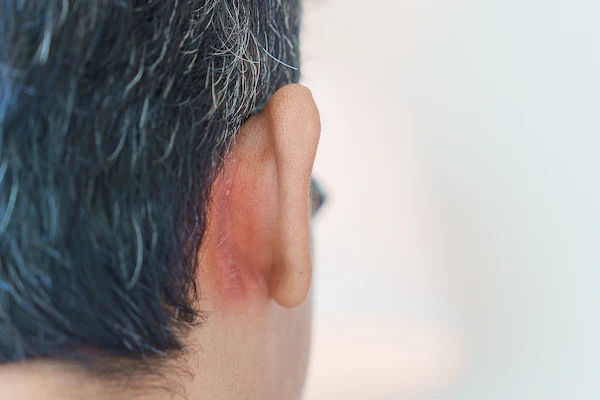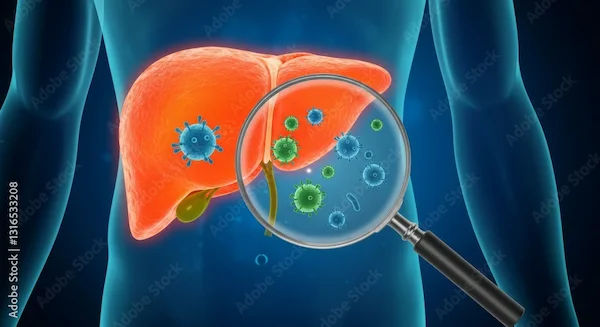Understanding Radiation Therapy: Types, Process, and Side Effects
Explore the types of radiation therapy, how the treatment process works, and common side effects. This guide helps patients understand what to expect and how to manage symptoms during cancer treatment.

Written by Dr. J T Hema Pratima
Reviewed by Dr. Dhankecha Mayank Dineshbhai MBBS
Last updated on 11th Sep, 2025

A cancer diagnosis often comes with a whirlwind of new information and treatment options. Among the most common and effective treatments is radiation therapy, a powerful tool used to target and destroy cancer cells. But what exactly is it, and what can a patient truly expect? This guide demystifies radiation therapy, breaking down the different types—from advanced external beams to internal brachytherapy—and providing a clear, honest look at potential side effects and how to manage them. Whether you're a patient preparing for treatment or a loved one seeking to understand, we'll walk you through the entire process, empowering you with knowledge and practical advice for the journey ahead. Our goal is to transform anxiety into understanding, helping you navigate your path to healing with confidence.
How Does Radiation Therapy Work to Fight Cancer?
Radiation therapy (also called radiotherapy) works on a simple but profound principle: it uses high-energy particles or waves, such as X-rays, gamma rays, or protons, to damage the DNA inside cancer cells. This damage either kills the cancer cells outright or makes it impossible for them to continue growing and dividing.
It's crucial to understand that radiation is a localized treatment. It is targeted very precisely to the tumor site or the area where the cancer was surgically removed, aiming to minimize damage to the surrounding healthy tissues. This precision is what sets modern radiation therapy apart from its historical counterparts.
Treatment is typically delivered over multiple sessions, called fractions. Spreading the total radiation dose over time allows healthy cells time to repair themselves between treatments, while cancer cells, which are less organized and often unable to repair this damage effectively, die off. The entire course of treatment is meticulously planned by a team of experts, including a radiation oncologist, medical physicists, and dosimetrists, to ensure the highest efficacy with the lowest possible risk.
Note: While we often think of radiation as "burning" the tumor, its primary effect is actually genetic. By causing irreparable double-strand breaks in the DNA of rapidly dividing cells, it triggers a process called apoptosis, or programmed cell death. Modern techniques are increasingly focused on manipulating this biological response for better outcomes.
The Two Main Categories of Radiation Treatment
Here are two main categories of radiation treatment:
1. External Beam Radiation Therapy (EBRT)
EBRT is the most common form of radiation treatment. It involves a machine called a linear accelerator that directs high-energy beams from outside the body toward the cancer. The technology has evolved dramatically, allowing for incredible precision.
- 3D-Conformal Radiation Therapy (3D-CRT): Using CT scans, 3D-CRT creates a detailed map of the tumor. The radiation beams are then shaped to match the tumor's dimensions, conforming to its size and shape to spare healthy tissue.
- Intensity-Modulated Radiation Therapy (IMRT): An advanced form of 3D-CRT, IMRT allows the radiation oncologist to control the intensity of each individual beam. This means different parts of the tumor can receive different doses, further protecting critical nearby organs. It's highly effective for complex tumors near sensitive structures.
- Image-Guided Radiation Therapy (IGRT): IGRT involves taking images (like X-rays or CT scans) immediately before or during each treatment session. This accounts for day-to-day changes in the body, such as organ movement or slight shifts in patient positioning, ensuring the beam is always perfectly on target.
- Stereotactic Radiosurgery (SRS) and Stereotactic Body Radiation Therapy (SBRT): Despite the name, these are non-surgical procedures that deliver very high, precise doses of radiation in one or a few sessions. SRS is for brain tumors, while SBRT (or "CyberKnife") is for tumors elsewhere in the body. It's a key option for inoperable tumors.
- Proton Beam Therapy: This cutting-edge technique uses protons rather than X-rays. Protons have a unique physical property: they deposit most of their energy at a specific depth (the tumor) with virtually no exit dose beyond it. This can be a significant advantage for treating childhood cancers or tumors very close to critical organs.
Consult Top Specialists
2. Internal Radiation Therapy (Brachytherapy)
Brachytherapy involves placing a radioactive source directly inside or next to the tumor. This allows a high dose of radiation to be delivered to a very small area, minimizing exposure to the rest of the body.
- Low-Dose Rate (LDR) Brachytherapy: The radioactive seeds (about the size of a grain of rice) are permanently implanted and give off radiation over several weeks or months until they become inactive. This is commonly used for prostate cancer treatment.
High-Dose Rate (HDR) Brachytherapy: A more temporary implant, where a highly radioactive source is placed inside the body for a short period (minutes) and then removed. This is often done in multiple sessions and is used for cancers of the cervix, uterus, breast, and lung.
Common Side Effects of Radiation Treatment
Side effects are typically localized to the area being treated and are a sign that the radiation is affecting cells, both cancerous and healthy, in the treatment field. They are usually temporary and manageable.
Managing General Side Effects
- Fatigue: This is the most common side effect. Combat it by listening to your body, pacing activities, engaging in light exercise like short walks, and ensuring good nutrition.
- Skin Changes: The skin in the treated area may look sunburned—becoming red, dry, itchy, or even peel. Use gentle, fragrance-free soaps, avoid hot water, wear soft clothing, and use only moisturizers approved by your radiation team. If your skin becomes blistered, painful, or weepy, it's important to consult your doctor or radiation oncologist immediately for specialized care.
Site-Specific Side Effects and Management Tips
- Head/Neck: Can cause dry mouth, thickened saliva, sore throat, taste changes, and mouth sores. Work with a dietitian on soft, moist foods, use saline rinses, and maintain meticulous oral hygiene.
- Chest: May lead to a dry, hacking cough, shortness of breath, or difficulty swallowing. Radiation therapy for lung cancer requires careful management of these symptoms.
- Abdomen/Pelvis: Can cause nausea, vomiting, diarrhea, or urinary discomfort. Medications can control nausea, and dietary changes (like the BRAT diet) can help manage diarrhea.
It is vital to report all side effects to your healthcare team. They have a wealth of strategies and medications to help you through them. If your symptoms are severe or causing significant distress, you can consult a doctor online with Apollo24|7 for prompt advice and management strategies.
Long-Term Effects and Late Side Effects to Be Aware Of
While most side effects subside after treatment ends, some can develop months or years later. These are less common but important to monitor. They depend entirely on the treatment area and can include tissue fibrosis (thickening or scarring), changes in skin color, lymphedema (swelling), and a very small increased risk of developing a second cancer later in life. Your oncology team will discuss your specific risks and schedule long-term follow-up appointments to monitor your health.
Conclusion
Navigating a radiation therapy journey is a significant undertaking, but understanding the types, process, and potential side effects can dramatically reduce anxiety and empower you as a patient. Remember, this powerful treatment is a cornerstone of modern oncology, offering both curative and palliative benefits for millions. While side effects are a reality, they are manageable and temporary for most. Your medical team is your greatest ally—lean on their expertise, ask questions, and report any concerns. By being an informed and active participant in your care, you can face your treatment with greater confidence and focus on your ultimate goal: healing and recovery. If you have ongoing concerns about managing side effects or your recovery post-treatment, booking a follow-up consultation with your oncologist is a crucial next step.
Consult Top Specialists
Consult Top Specialists

Dr. Amit Choraria
Surgical Oncologist
18 Years • MBBS, MS (Surgery) Fellow, Surgical Oncology, Tata Medical Center (FSO) Fellow, European Board of Surgery (Surgical Oncology) (FEBS) Fellow, Minimal Access Surgery (FMAS) Fellow, Indian Association of Gastrointestinal Endosurgeons (FIAGES) UICC Fellow, Royal Marsden NHS, London, UK Visiting Scholar, Plastic Reconstructive Surgery, CGMH, Taiwan Fellow, Robotic Surgical Oncology, Vattikuti Foundation, USA
Kolkata
Apollo Multispeciality Hospitals , Kolkata, Kolkata
(50+ Patients)

Dr. Gopal Kumar
Head, Neck and Thyroid Cancer Surgeon
15 Years • MBBS, MS , FARHNS ( Seoul, South Korea ), FGOLF ( MSKCC, New York )
Delhi
Apollo Hospitals Indraprastha, Delhi
(25+ Patients)

Dr Devashish Tripathi
Radiation Specialist Oncologist
20 Years • MBBS, PLAB, MRCP (UK)- General Medicine, FRCR (Oncology), Certificate of Completion of Training (CCT)- Clinical Oncology
Delhi
Apollo Hospitals Indraprastha, Delhi

Dr Sunita Samleti
Oncologist
18 Years • M.D. (Pathology)- TN Medical College, Mumbai University, Mumbai, Mar 2005 M.B.B.S. Grant Medical College, Mumbai University, Mumbai, Oct 1999
Chinagadila
Apollo Hospitals Health City Unit, Chinagadila

Dr. Sanchayan Mandal
Medical Oncologist
17 Years • MBBS, DrNB( MEDICAL ONCOLOGY), DNB (RADIOTHERAPY),ECMO. PDCR. ASCO
Kolkata
MCR SUPER SPECIALITY POLY CLINIC & PATHOLOGY, Kolkata
Consult Top Specialists

Dr. Amit Choraria
Surgical Oncologist
18 Years • MBBS, MS (Surgery) Fellow, Surgical Oncology, Tata Medical Center (FSO) Fellow, European Board of Surgery (Surgical Oncology) (FEBS) Fellow, Minimal Access Surgery (FMAS) Fellow, Indian Association of Gastrointestinal Endosurgeons (FIAGES) UICC Fellow, Royal Marsden NHS, London, UK Visiting Scholar, Plastic Reconstructive Surgery, CGMH, Taiwan Fellow, Robotic Surgical Oncology, Vattikuti Foundation, USA
Kolkata
Apollo Multispeciality Hospitals , Kolkata, Kolkata
(50+ Patients)

Dr. Gopal Kumar
Head, Neck and Thyroid Cancer Surgeon
15 Years • MBBS, MS , FARHNS ( Seoul, South Korea ), FGOLF ( MSKCC, New York )
Delhi
Apollo Hospitals Indraprastha, Delhi
(25+ Patients)

Dr Devashish Tripathi
Radiation Specialist Oncologist
20 Years • MBBS, PLAB, MRCP (UK)- General Medicine, FRCR (Oncology), Certificate of Completion of Training (CCT)- Clinical Oncology
Delhi
Apollo Hospitals Indraprastha, Delhi

Dr Sunita Samleti
Oncologist
18 Years • M.D. (Pathology)- TN Medical College, Mumbai University, Mumbai, Mar 2005 M.B.B.S. Grant Medical College, Mumbai University, Mumbai, Oct 1999
Chinagadila
Apollo Hospitals Health City Unit, Chinagadila

Dr. Sanchayan Mandal
Medical Oncologist
17 Years • MBBS, DrNB( MEDICAL ONCOLOGY), DNB (RADIOTHERAPY),ECMO. PDCR. ASCO
Kolkata
MCR SUPER SPECIALITY POLY CLINIC & PATHOLOGY, Kolkata
More articles from General Medical Consultation
Frequently Asked Questions
Is radiation therapy painful?
The treatment itself is painless, much like getting an X-ray. You will not see or feel the beams during the session. However, side effects that develop later, like skin irritation or mouth sores, can cause discomfort, which your team can help manage.
Will I be radioactive after external beam radiation?
No. External beam radiation does not make you radioactive. The radiation beams pass through your body and do not leave any radioactive material behind. You can safely interact with others, including children and pregnant women.
How long does a typical radiation treatment course last?
A full course of external beam radiation typically lasts between 2 to 8 weeks, with treatments given Monday through Friday. Each daily session usually takes only 10-20 minutes, though the first appointment (simulation) is longer.
What is the difference between radiation therapy and chemotherapy?
Chemotherapy is a systemic treatment using drugs that travel throughout the entire body to kill rapidly dividing cells. Radiation therapy is a localized treatment targeting only a specific tumor or area.
Can I work during radiation treatment?
Many people continue to work, especially if their side effects are manageable. However, fatigue is common, so some patients adjust their schedules or take time off. It depends on your individual reaction and the physical demands of your job.




